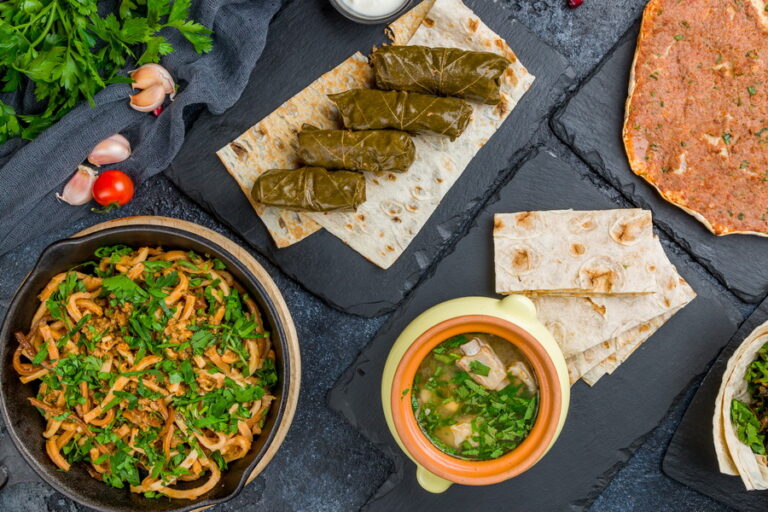Introduction to Armenian Cuisine
Armenian cuisine is a rich and diverse culinary tradition that has been influenced by various cultures throughout history. Located at the crossroads of Asia and Europe, Armenia has a unique blend of flavors and ingredients that make its cuisine distinct. The cuisine is known for its Middle Eastern and Mediterranean flavors, as well as its use of fresh herbs and spices.
Influences on Armenian Cuisine
The influences on Armenian cuisine come from different cultures and regions. The Ottoman Empire, Persia, Russia, and Byzantine Empire have all had an impact on the development of Armenian cuisine. The use of ingredients like bulgur, lentils, yogurt, and lamb can be traced to the Middle East and Mediterranean cuisine. The cuisine also takes influences from the Caucasus region with the use of pomegranate, walnut, and sour fruits.
Common Ingredients in Armenian Cuisine
Armenian cuisine uses a lot of fresh herbs, spices, and vegetables. Some of the common ingredients include eggplant, tomatoes, onions, garlic, parsley, mint, and dill. Meat is also a staple in Armenian cuisine, with lamb, beef, and chicken being the most popular. Rice and bulgur are commonly used as well.
Religious Dietary Restrictions in Armenian Cuisine
Armenia is one of the oldest Christian nations in the world, and as such, the Armenian Apostolic Church has a significant influence on Armenian cuisine. The Church has dietary restrictions, with meat being avoided during certain religious holidays and periods of fasting. On these occasions, vegetarian dishes are commonly served, and seafood is also consumed.
Non-Religious Dietary Restrictions in Armenian Cuisine
Armenian cuisine doesn’t have many non-religious dietary restrictions, but some dishes are more commonly prepared for specific occasions. For example, dolma, a dish made with stuffed grape leaves or peppers, is typically served during special occasions like weddings and holidays.
Vegetarian and Vegan Options in Armenian Cuisine
Armenian cuisine offers a wide range of vegetarian and vegan options. Many dishes are plant-based, such as stuffed grape leaves, lentil soup, and roasted vegetable dishes. Traditional dips like hummus and muhammara are also vegan. In addition, many dishes can be modified to be vegan, such as replacing meat with mushrooms or tofu.
Gluten-Free Options in Armenian Cuisine
Armenian cuisine has a wide range of gluten-free options, such as dolma, grilled meats, and vegetable dishes. Rice and quinoa are commonly used as substitutes for bulgur. Armenian bread, however, is typically made with wheat flour, so those with a gluten intolerance must be cautious.
Conclusion: Dietary Restrictions in Armenian Cuisine
Armenian cuisine is a rich and diverse culinary tradition that offers a variety of options for people with different dietary restrictions. Whether you’re vegetarian, vegan, or gluten-free, there are plenty of delicious and healthy options to choose from. With its Middle Eastern and Mediterranean influences, Armenian cuisine is sure to delight your taste buds.

